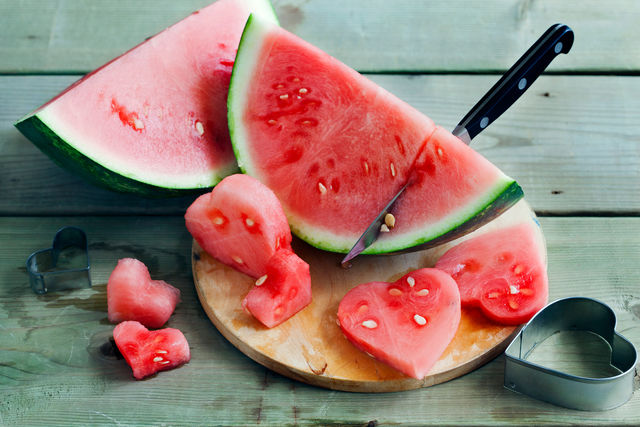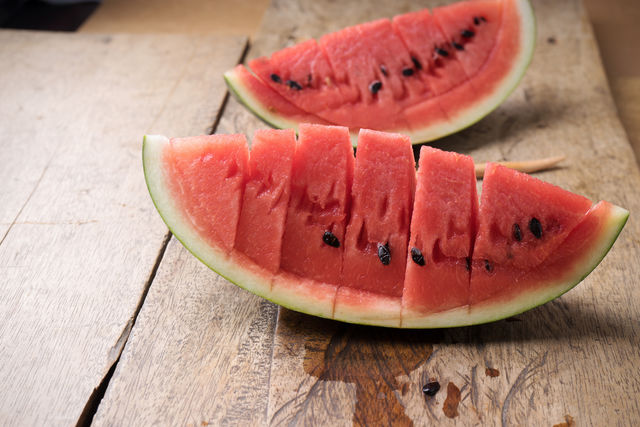How to check nitrates in watermelon with simple methods
Content
How to choose the right watermelon
Nitrates are minerals used in agriculture. They are produced by the action of nitric acid on oxides, salts, and metals. Nitrates dissolve well in water. The main application of nitrates is plant fertilization. As you know, there are no products without nitrates. All plants contain nitrates. However, a large number of them can be toxic and dangerous to humans.
By themselves, nitrates do not pose a particular danger, but when they enter the gastrointestinal tract, they turn into nitrites (nitric acid salts), which are very toxic to the body and leading to oxygen starvation of tissues.
Nitrates, when ingested, can reduce the amount of vitamins in food that enters the body, as well as lead to problems with the thyroid gland. Exceeding the daily intake of nitrates can lead to indigestion with blue skin, difficulty breathing and diarrhea, and other unpleasant signs of food poisoning.
Most often, the presence of nitrates in watermelons is checked in laboratory conditions, but there are special signs by which you can determine the presence of nitrates yourself at home. This article will tell you how to test a watermelon for nitrates using simple methods.
It is worth noting that the quality of the watermelon should be determined before purchasing it. In order to protect yourself when buying it, you should pay attention to some important signs. First, buy watermelons only in specialized places and markets that comply with all hygienic and sanitary standards for storing food. Sellers must have special sales permits.
The fruits should be neatly arranged and stored in clean containers on special trays. Watermelons should never be stored on the floor to avoid contact with dirt. You shouldn't risk buying a cracked, broken or crumpled fruit. A ripe watermelon that has grown naturally has a dry tip and will ring when tapped. It is not recommended to eat the fruit, if, when examining its cut, the surface has a slightly purple tint.
Pay attention to the season and do not buy watermelons too early. A smart buyer always knows when to refrain from buying. Nitrate fruits are most often sold until mid-July. If you buy a watermelon from mid-August and September, you can not worry about the presence of harmful substances in the fruits.
Many sellers are happy to provide their buyers with the opportunity to taste a bite before buying. In supermarkets, for demonstration, the fruit is cut in half and wrapped in a thin cling film through which you can easily see all the flaws. However, only visually it is impossible to determine that watermelons are free of nitrates.
Most accurately, a watermelon can be checked using a special device - a nitrate meter. However, this device is expensive. Popular signs by which you can determine the amount of nitrates are also quite effective.
Video "Testing watermelon for nitrates"
Validation rules
There are several methods for testing watermelons for nitrates at home. For example, if you put a watermelon in a container and it floats up, it means that the fruit is of good quality. If you dipped a watermelon into a bath, for example, and it went to the bottom, this will indicate a high content of nitrates in it.
If you find whitish and yellow streaks in the pulp of a watermelon, this also indicates nitrates. There is another proven folk method with which you can check the fruits at home. To do this, you only need a small amount of water.
It is worth cutting off a small piece of pulp, crumbling it and placing it in a small container of water for fifteen minutes. If the watermelon is safe, the water should just darken slightly and take on a pale pink hue. But if the water turns bright pink or red with an admixture of purple, this will indicate a high content of nitrate pollution. It is better to get rid of such a watermelon and in no case eat it.
Do not forget also about the rules for the use of watermelons. This fruit is a complete independent dish that should be consumed separately from the rest of the food. It is recommended to eat it 2 hours before the main meal or 2 hours after it. This is because you can not overload your stomach mildly by combining watermelon with other food.
Before consuming watermelon, take a few minutes to thoroughly wash it in running water. Nitrates in fruits and vegetables are unevenly distributed. Do not forget that the largest amount of nitrates accumulates in their skins. Do not eat the flesh all the way to the crust.
What you need to make sure of
It will also not hurt to make sure of the safety of the products sold by reading the documents that guarantee their quality and compliance with all standards. The surface of a quality fruit should not be grainy and not perfectly smooth. The granular structure of the pulp indicates the naturalness of the product. However, you should also not buy a watermelon that is too grainy, as it may be overripe. When cutting, pay attention to the fibers. In good quality fruits, they should be white. Yellowish fibers most often indicate a high nitrate content.
Ask where the watermelon was brought from. Most of the fruits are pink in color, and only a few northern varieties are bright red. Such specimens, as a rule, do not come in huge sizes. Therefore, if you have a ten-kilogram fruit with red pulp in front of you, then most likely it is stuffed with nitrates.
Video "Checking melons for nitrates"
It is often believed that a huge amount of nitrates can be found in melons. To check on the spot whether this is so, we bring to your attention this technique described in the video.




